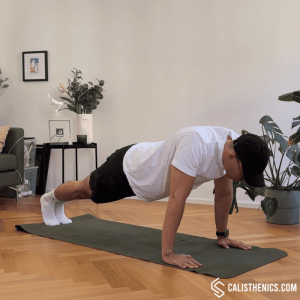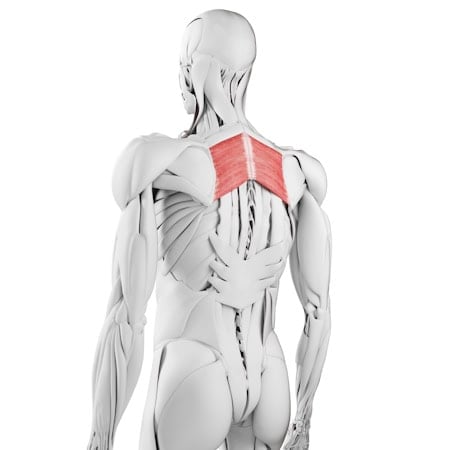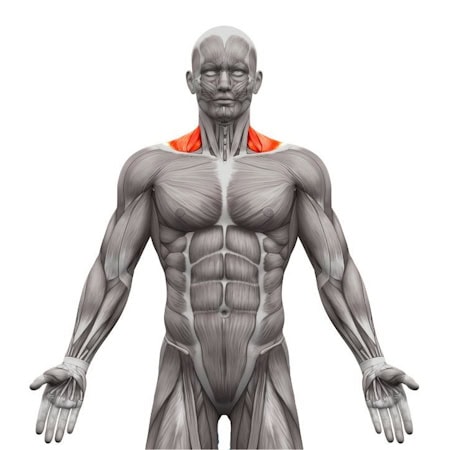Scapula Push-ups
How to do Scapula Push-ups?
Scapula push-ups, also known as shoulder blade push-ups, are a push-up variation that focuses on improving shoulder mobility, stability, and strength by targeting the scapula (shoulder blades). Unlike traditional push-ups, there is no bending of the elbows; instead, the movement is controlled by retracting and protracting the shoulder blades, making it an essential exercise for shoulder health, posture improvement, and upper body mobility.
Whether you’re looking to strengthen your shoulder girdle, improve posture, or enhance your performance in overhead movements, scapula push-ups are an excellent addition to your workout routine.
Steps to Perform a Proper Scapula Push-up:
1. Starting Position:
• Begin in a high plank position with your hands placed shoulder-width apart. Your body should form a straight line from your head to your heels. Engage your core and glutes to maintain proper alignment.
2. Retract Your Scapula:
• Without bending your elbows, squeeze your shoulder blades together, allowing your chest to lower slightly toward the ground. Keep your arms straight throughout this movement.
3. Protract Your Scapula:
• Once your shoulder blades are fully retracted, push them apart by pressing through your palms, spreading the shoulder blades wide across your back. Your upper back should round slightly as your chest moves away from the floor.
4. Maintain Body Alignment:
• Throughout the movement, keep your body in a straight line, engaging your core and avoiding any sagging or arching of the lower back.
5. Repeat:
• Perform the desired number of repetitions, maintaining a smooth, controlled motion through each scapular retraction and protraction.
Benefits of Scapula Push-ups
• Improves Shoulder Mobility: Scapula push-ups help increase the mobility of the shoulder blades, promoting better shoulder health and range of motion.
• Strengthens the Serratus Anterior: This exercise targets the serratus anterior, which is crucial for stabilizing the shoulder blades and preventing shoulder injuries.
• Enhances Shoulder Stability: By isolating the movement of the scapula, this exercise strengthens the muscles around the shoulder girdle, improving overall stability and reducing the risk of shoulder impingements.
• Improves Posture: Scapula push-ups encourage proper alignment of the shoulder blades, making them an excellent exercise for improving posture, especially for individuals who sit for long periods.
• Essential for Athletes: This exercise is particularly beneficial for athletes who perform overhead movements, such as swimmers, weightlifters, and tennis players, as it helps protect the shoulders from overuse injuries.
• Aids in Push-up Form: Regular scapula push-ups can help improve your form in standard push-ups by strengthening the muscles responsible for stabilizing the shoulders during pressing movements.
• Builds Functional Strength: By enhancing the strength and mobility of the shoulder blades, scapula push-ups help improve functional strength for everyday activities and sports movements.
Tips for the proper execution of Scapula Push-ups
Focus on Shoulder Blade Movement: The goal of this exercise is to isolate the movement of the scapula. Ensure your elbows remain locked and focus on squeezing and spreading your shoulder blades.
Core Engagement: Keep your core and glutes engaged to maintain proper body alignment and avoid unwanted movement in the hips or lower back.
Controlled Movements: Perform the exercise slowly and with control to fully engage the muscles of the shoulder girdle and prevent injury.
Breathing: Inhale as you retract your scapula (lowering your chest) and exhale as you protract your scapula (pushing through your hands and rounding your back).
Muscles worked when doing Scapula Push-ups
Primary Muscles:
•Serratus Anterior: This muscle is heavily engaged during the protraction phase, helping stabilize the shoulder blades.
•Rhomboids: These muscles work during the retraction phase to pull the shoulder blades together.
•Trapezius (Middle and Lower): Helps with the controlled movement of the scapula, particularly during retraction.
Secondary Muscles:
•Core: Abdominals and obliques (for stabilization and body alignment)
•Pectoralis Minor: Assists in scapular protraction during the push-away phase.
•Rotator Cuff Muscles: These stabilize the shoulder joint throughout the movement.
•Lower Back: Erector spinae, to help maintain posture and avoid arching during the movement.
Primary Muscle(s):
Secondary Muscle(s):
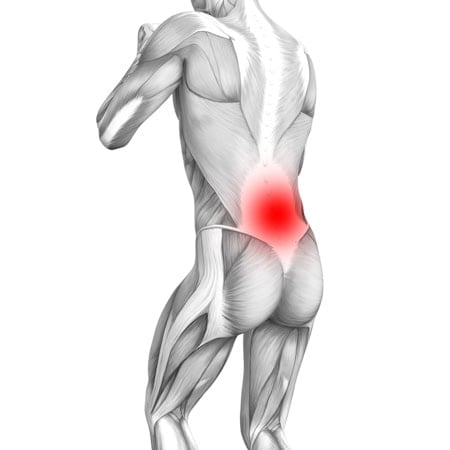
Lower back
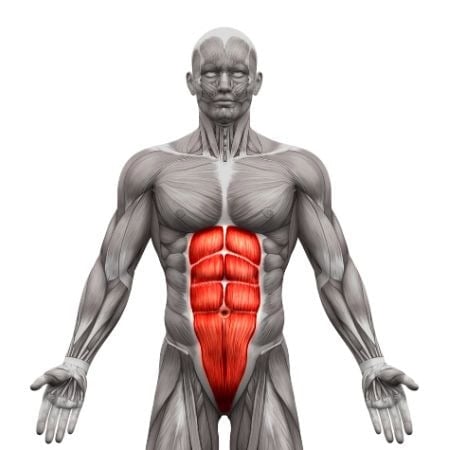
Abdominal
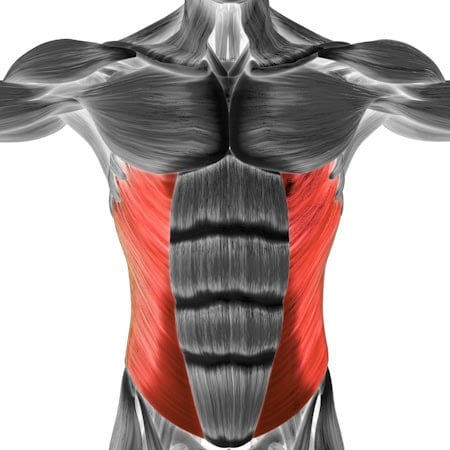
Oblique
Equipment needed for Scapula Push-ups
No equipment needed for this exercise.
Adjust the difficulty of Scapula Push-ups
How to make Scapula Push-ups harder?
How to make Scapula Push-ups easier?
How to make Scapula Push-ups harder?
To make Scapula Push-ups harder:
-
Increase Range of Motion: Focus on fully retracting and protracting your shoulder blades to increase the difficulty and effectiveness of the movement.
-
Add Resistance: Wear a weighted vest or use resistance bands around your shoulders and hands to add extra tension during the movement.
-
Perform on an Unstable Surface: Use a stability ball or balance board to engage additional stabilizing muscles and increase the challenge.
-
Increase Repetitions or Hold at Protraction: Increase the number of reps or hold the protraction position for a few seconds at the top of the movement to challenge the shoulder stabilizers further.
How to make Scapula Push-ups easier?
To make Scapula Push-ups easier:
-
Perform Scapula Knee Push-ups: Keep your knees on the ground to reduce the load on your upper body while still focusing on the scapular movement.
-
Elevated Scapula Push-ups: Place your hands on a bench or step to decrease the intensity of the exercise while allowing you to practice proper form.
-
Shorten the Range of Motion: Start with smaller retraction and protraction movements and gradually increase the range as your shoulder strength and mobility improve.

